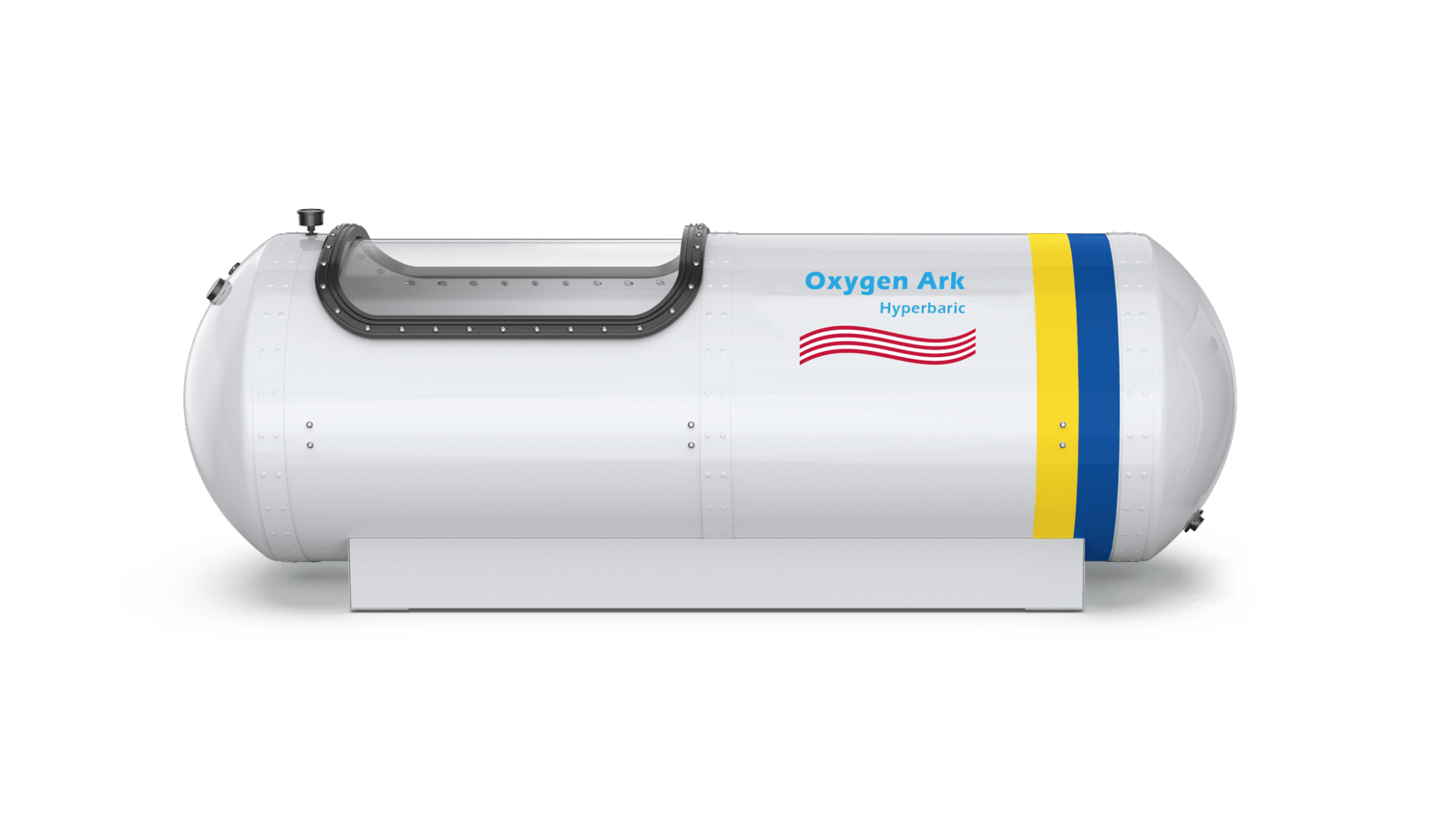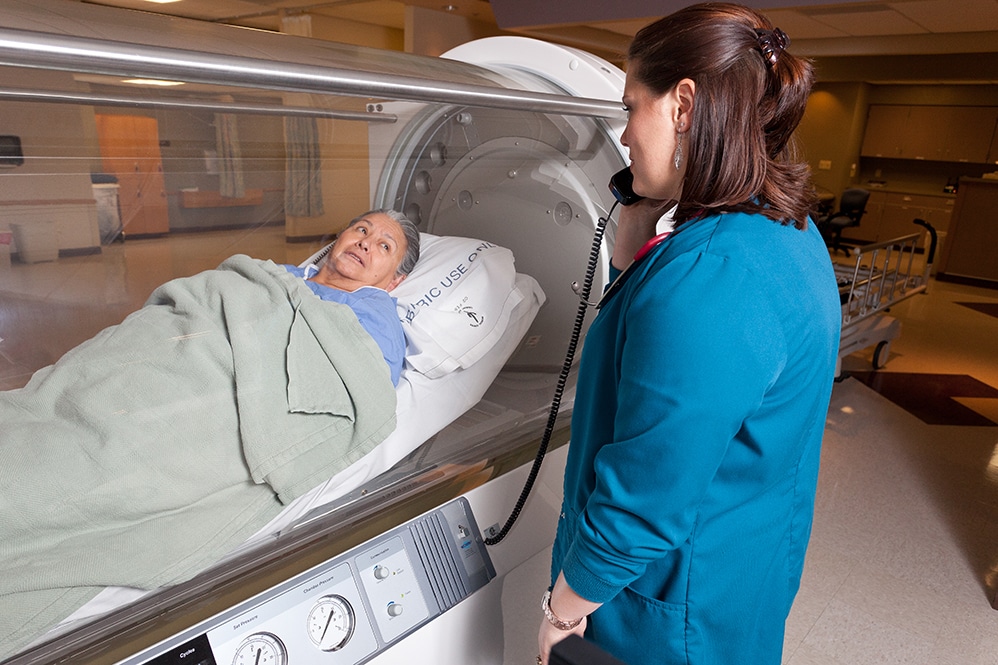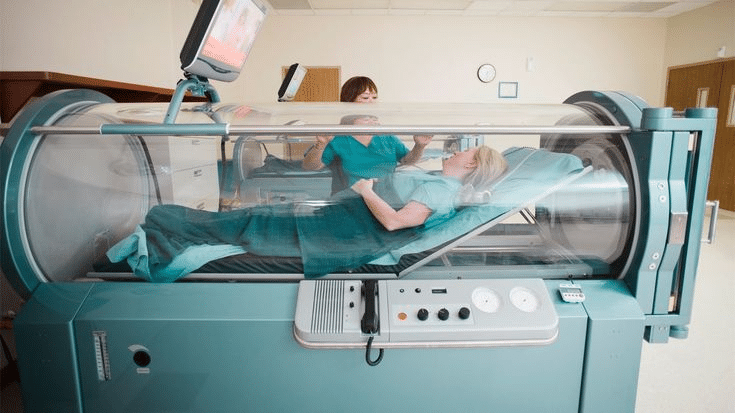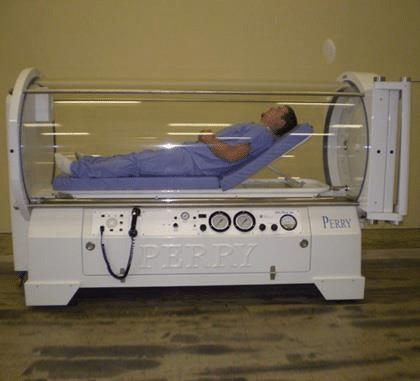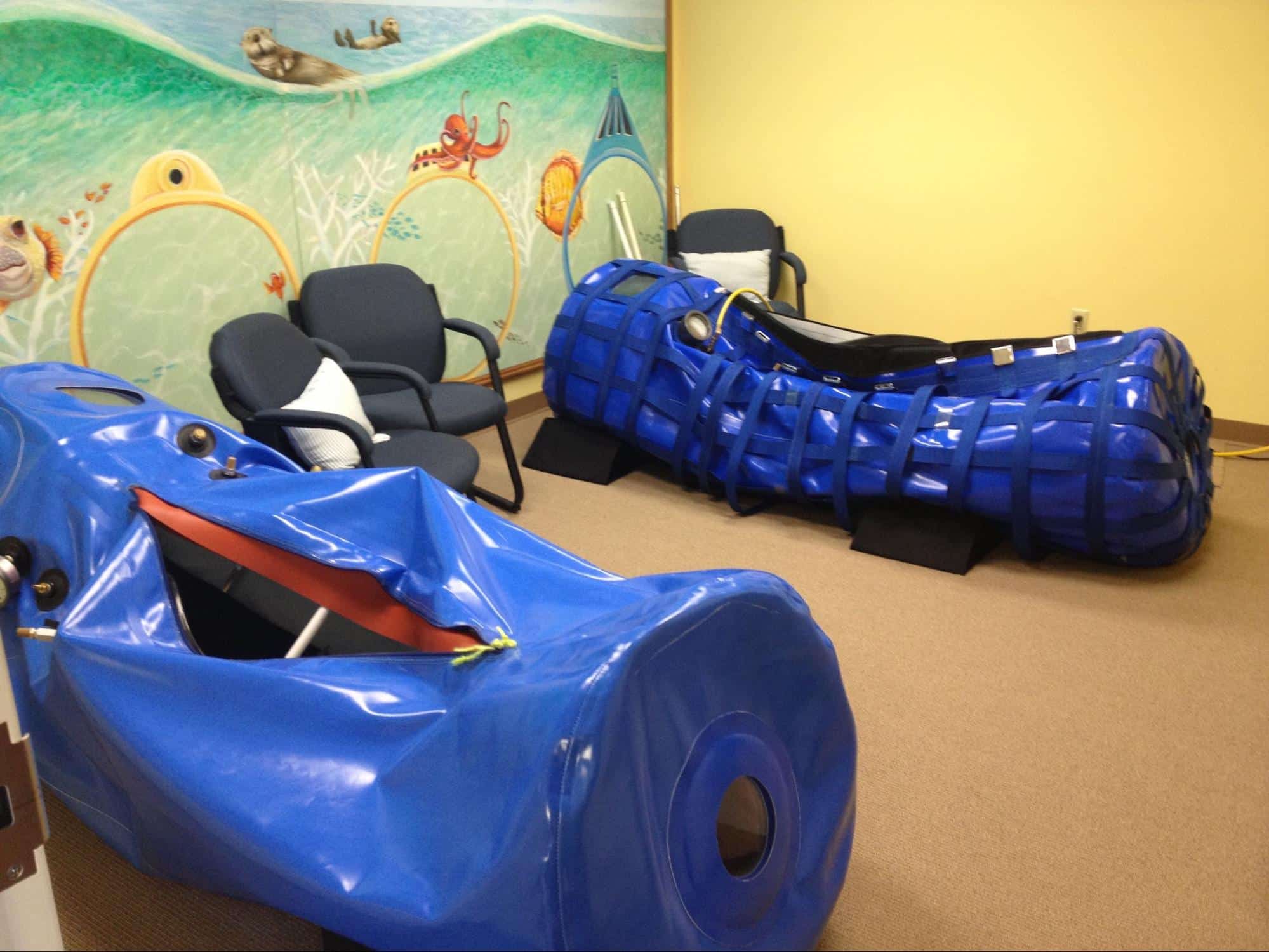
Source: Pinterest
Hyperbaric oxygen treatment (HBOT) is a non-invasive method that works by increasing the quantity of oxygen in the tissues of the body, boosting healing, and giving a variety of therapeutic effects.
While the efficacy of HBOT has been extensively researched and proven, it is critical to address the cost side of this therapy. Discussing the cost of HBOT is critical because it helps people contemplating this therapy to understand the financial commitment needed and make educated healthcare decisions.
In this post, we will look at the cost elements of hyperbaric oxygen therapy, including prospective fees and financial support options.
Factors Affecting the Cost of Hyperbaric Oxygen Therapy
Facility Fees
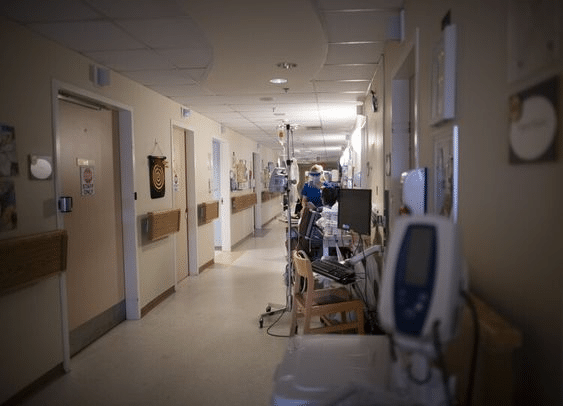
Source: Pinterest
The cost of hyperbaric oxygen treatment (HBOT) is heavily influenced by facility costs. These fees cover the costs connected with using the facility and its amenities. The amount of space and the quality of the facility, as well as its location, can all have an influence on the HBOT facility expenses. Larger and more modern facilities may incur more overhead costs, resulting in higher prices.
Facility fees usually cover a variety of expenditures, including hyperbaric chamber operation and maintenance, specialized equipment, utilities, staffing, and administrative charges. Furthermore, the provision of extra services, such as medical monitoring or wound care, may contribute to overall facility expenses.
Individuals contemplating HBOT should enquire about facility costs and understand how they are structured upfront. This information enables patients to make educated judgments about their treatment options as well as assess the pricing and accessibility of various institutions. Check to see if your insurance covers facility costs or if you will have to pay them out of pocket.
Session Duration and Frequency
The duration and regularity of hyperbaric oxygen therapy (HBOT) sessions can impact total treatment expenses. The duration of each session, which typically runs from 60 to 120 minutes, as well as the number of sessions required, are decided by the condition being treated and the individual’s response to therapy. Some people may require daily treatments, whilst others may only require them every other day or less frequently.
HBOT might become more expensive as treatments get longer and more frequent. The additional time, resources, and personnel required for each session result in a greater total cost. Patients should consider the length and frequency advised by their healthcare expert when determining the projected cost of HBOT.
It is critical to note that the number of sessions needed is determined by the specific medical condition, its severity, and the desired therapeutic outcome. Some patients may only require a short course of treatment, but others may require ongoing or intermittent sessions. Consultation with a healthcare practitioner who is knowledgeable about HBOT can provide valuable insight into the expected session duration and frequency, allowing patients to estimate and plan accordingly.
Equipment and Maintenance Costs
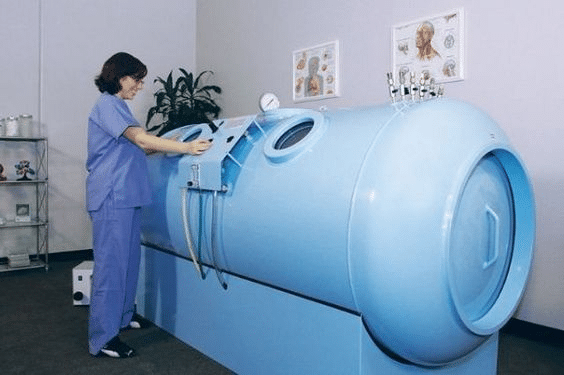
Source: Pinterest
Equipment and maintenance costs can have a significant influence on the overall cost of hyperbaric oxygen therapy (HBOT). HBOT employs hyperbaric chambers, oxygen supply systems, monitoring devices, and other specialized equipment to assure safe and effective therapy.
The cost of a hyperbaric chamber is determined by factors such as size, type, and features. Larger or more complex chambers may cost more. Additionally, the purchase or lease of supporting equipment and supplies, such as oxygen concentrators or masks, can increase overall equipment costs.
Equipment maintenance and service are ongoing expenses that must be budgeted for. Regular inspections, repairs, and maintenance tasks are necessary to ensure that the equipment operates safely and effectively. These pricing may vary depending on the kind and complexity of the equipment, as well as regulatory constraints.
Patients considering HBOT should inquire about the facility’s equipment and maintenance costs. Understanding these expenses will help patients make informed decisions about their treatment options and evaluate the financial implications of HBOT.
Additional Medical Services or Consultations
Additional medical services or consultations may increase the cost of hyperbaric oxygen therapy (HBOT). Extra medical services or consultations may be necessary in addition to the standard HBOT sessions, depending on the individual’s condition and particular treatment requirements.
Medical examinations, specialist consultations, diagnostic testing, wound care, and drug distribution are all examples of supplemental services. The cost of various therapies varies depending on the complexity and extent of the needed medical intervention.
If a patient needs wound care as part of their HBOT treatment, the cost of particular bandages, wound assessments, and follow-up visits, for instance, may be added to the total cost. likewise, if a patient requires drug administration during HBOT, the cost of the medications, as well as any associated monitoring, may be included to the total cost.
Individuals considering HBOT should be informed of any further medical treatments that may be required, as well as the associated costs.
Location and Demand
The cost of hyperbaric oxygen treatment (HBOT) is affected by its location as well as demand. Because of increased competition and limited resources, the cost of HBOT facilities may be higher in areas where demand exceeds supply. Furthermore, hospitals in locations with a higher cost of living or overall healthcare expenses may charge a higher premium for HBOT.
In areas with a large concentration of HBOT facilities and high competition, the cost may be more competitive and maybe lower. Geographic location may affect insurance coverage availability and reimbursement fees, which can impact patient expenses.
Individuals thinking for HBOT should examine the location and demand for this treatment. Patients can acquire the most cost-effective HBOT treatments without sacrificing quality by studying and comparing the price of various institutions in their neighborhood, as well as examining options in nearby areas.
Average Cost of Hyperbaric Oxygen Therapy

Source: Pinterest
While providing an accurate average cost is difficult because to the wide variety of variables involved, the following criteria can assist offer an idea of the possible expenditures connected with HBOT:
- Initial consultation and evaluation:
The initial consultation and evaluation prior to HBOT therapy normally comprise a medical examination and may include diagnostic testing. The cost of these services might range from one hundred dollars to five hundred dollars or more, depending on the complexity and scope of the review.
- HBOT session or hourly fees:
HBOT session or hourly fees might range from two hundred and fifty dollars to eight hundred dollars or more. The exact charge is dependent on factors such as the kind of chamber, location, and session time. Longer sessions, such as Ninety or 120 minutes in duration, may cost more than shorter ones.
- Packages or discounted rates:
Some facilities offer packages or reduced rates for several sessions. These can be beneficial for patients who require a series of therapy. Discounts may also be available for military personnel, the elderly, and certain patient populations. Enquire with the facility about any possible packages or discounted pricing to potentially reduce the entire cost.
- HBOT insurance coverage and reimbursement:
This varies depending on the insurance provider and policy. Some insurance coverage covers HBOT for certain medical concerns, while others may require pre-authorization or limit the number of sessions supported. Patients ought to reach out to their insurance company to find out more about their cover, including any deductibles, copayments, or out-of-pocket expenses.
People who do not have insurance may face significant out-of-pocket payments. To aid with budgeting, the institution or outside entities may provide financial assistance initiatives, grants, or payment plans.
Additional Costs and Considerations
Aside from the basic costs of hyperbaric oxygen therapy (HBOT) sessions, the following factors may add to overall costs and should be considered:
A. Pre-treatment medical tests and assessments:
Patients may be required to undergo a number of medical tests and assessments before commencing HBOT to establish their suitability for therapy. These may include laboratory tests, imaging studies, and consultations with specialists. The cost of these pre-treatment exams varies according on the tests required and the healthcare practitioner.
B. Accommodation and transportation expenses:
Individuals traveling for HBOT should include in accommodation and transportation expenses. This is especially useful for individuals who need to attend a long series of sessions or therapy at a facility in another state.
C. Cost of specialized equipment or supplies:
In some cases, patients may require specialized equipment or supplies for HBOT. This can include bandages, oxygen masks, and medications. These additional costs may vary depending on the individual’s health and treatment requirements.
D. Follow-up care or maintenance sessions:
After completing the initial course of HBOT, some persons may require follow-up care or management sessions. These sessions may be necessary for the long-term treatment of certain conditions. The number and length of these follow-up treatments may vary, and their costs should be included into the overall cost of HBOT.
Conclusion
Understanding cost-influencing factors such as facility fees, session length, other medical treatments, and insurance coverage allows patients to make informed healthcare decisions and plan for the financial consequences of HBOT.
Patients may help ensure that HBOT remains accessible and affordable for those who can benefit from treatment by calculating potential expenses and exploring available financial assistance options.

